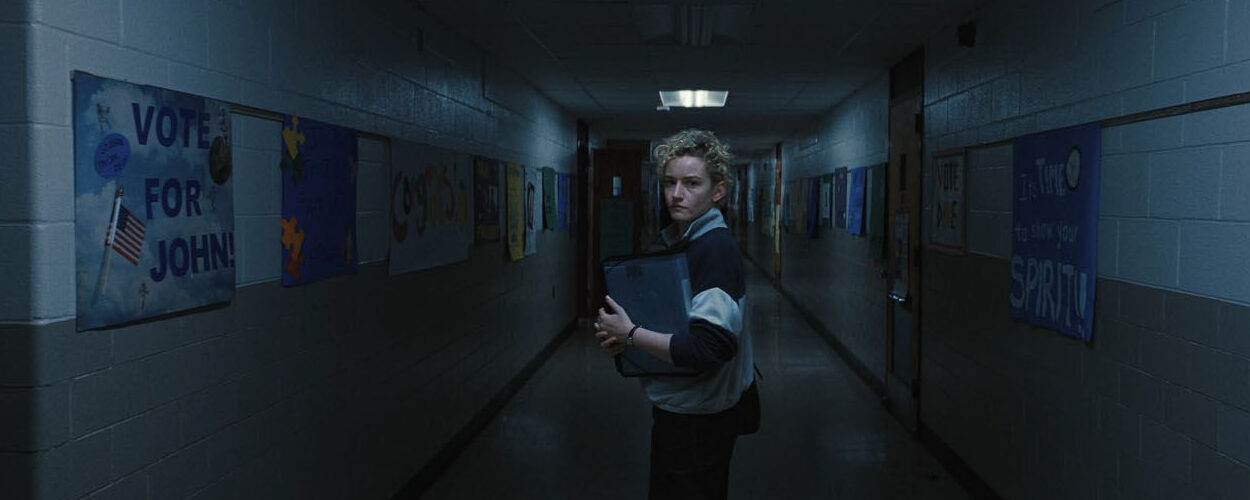The trailers, and somewhat overdone narration at the start of the film highlighting the situation the community is in, may takeaway from the unknowingness at the start of the film. But when ‘Beware of Darkness’ by George Harrison plays while children run with their hands out, it creates an aura and intrigue needed for a start of a horror film to succeed.
It is clear to see early on the depth of knowledge that the director has for other horror/thriller films and the influence they have on this film. The sets itself from the point of view of the teacher (Julia Garner) whose class have all disappeared in this strange occurrence. You follow her story in the same way a giallo film would follow the main actor. They are the one who are being accused by the community of the wrongdoings. Without the help of others around them or even the police force have to try and work out the goings on by themselves. One shot even positions her next to a J&B bottle, the staple of any giallo film. It creates a connection between audience and main character where we join them on this journey, accused or not we know they aren’t the ones to blame.
You start to be introduced to other characters in the film; her ex-boyfriend who is now a police officer, her work colleague and then the father of one of the lost children (Josh Brolin). This is when the story really starts to become different to expected. We move from it just being her point of view, to being from multiple different perspectives. This sharp change in direction becomes the films most valuable asset but also at the same time its biggest downfall. The shifting between characters to tell their individual story creates many different angles on events not seen if we just saw the teachers perspective, it also creates a more dynamic narrative where the stories intertwine and come together to make many thrilling moments.
The question that comes from this however is does this style of storytelling both suit a horror film and also cinema as a whole. There are many films that play on the multiple perspectives in a great way for cinema, Babel (Iñárritu, 2006) is the first that comes to mind or even Psycho (Hitchcock, 1960) which you have the feeling this film bases somewhat on. But when it is to the extent of over five different perspectives in the story, it does become a bit tiresome. A good multiple perspective movie works well when you don’t know when or how the stories will entangle in one another, here it is pretty obvious mainly due to the fact its a horror film with one underlying storyline. It also feels the story is more suited to a limited television programme in this sense where each episode follows a different character – I kept thinking about The White Lotus television show throughout which could’ve been due to the strange incidental music they played halfway through that sounded like it could’ve been from this show with its ‘quirky’ storyline and premise.
As already stated, this both benefits the film and doesn’t. I do believe the film wouldn’t be the same without the perspective of other characters and the storylines it creates from it are really to the films benefit. The only reservation from me is that it achieves it in a disjointed way, more suited to the television rather than a film. But for originality and interesting story, the film definitely wins it for me.
